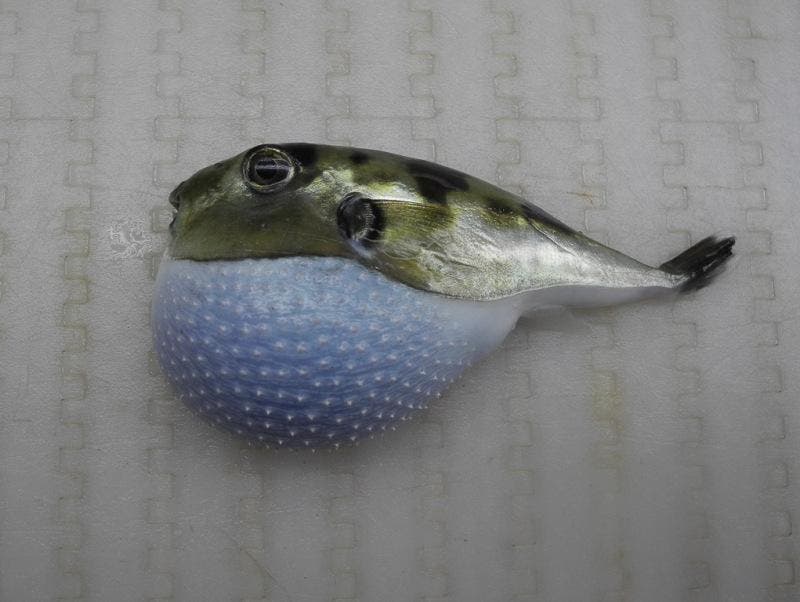Home & Garden
Smooth Puffers Show Up In Barnegat Bay, But Their Toxicity Draws Attention
The fish, in the blowfish family, are caught from time to time by anglers during the summer.

TOMS RIVER, NJ — Blowfish are being caught in Barnegat Bay again this summer, but the appearance of a less-common member of the species has sparked fears due to talks of its poisonous nature.
The northern puffer, a common inhabitant of the bay, has been joined this summer by some smooth puffers — a larger cousin of the northern puffer.
The Asbury Park Press reported experts from the National Marine Fisheries Service have identified photos of at least one puffer caught as the southern puffer, noting "you may want to throw it back" because the fish contains levels of a neurotoxin called tetrodotoxin and/or saxitoxin.
Find out what's happening in Toms Riverwith free, real-time updates from Patch.
"These toxins are more deadly than the poison cyanide and can affect a person's central nervous system," according to the Food and Drug Administration. "There are no known antidotes for these toxins. Puffer fish must be cleaned and prepared properly so the organs containing the toxins are carefully removed and do not cross-contaminate the flesh of the fish. These toxins cannot be destroyed by cooking or freezing."
The toxins in the smooth puffer are found in the liver, gonads (ovaries and testes) and intestines and sometimes the skin, according to the FDA.
Find out what's happening in Toms Riverwith free, real-time updates from Patch.
It is found in several parts of the world, including the Western Atlantic, from New England south to Bermuda and to Argentina, according to the website FishBase.org, which maintains links to scientific studies of various fish of the world.
The smooth puffer has been confused for its smaller cousin, the northern puffer; smooth puffers average 2 feet in length while northern puffers average 8 inches, according to FishBase.org. A 3.4-pound smooth puffercaught in 2012 by a local youngster was at first thought to be a potential state record for a northern puffer.
Puffers — blowfish — get their name due to their defensive reaction of puffing up with water to ward off predators.
The flesh of northern puffers is reportedly nontoxic, but its liver can contain poison, according to the International Union for Conservation of Nature's Red List article on the species. The late John Geiser, the longtime fishing columnist for the Asbury Park Press, published an article yearly on the proper way to clean blowfish to prevent contamination of the meat from the toxins in the liver.
So what do you do if you catch one?
The best bet — as with any fish you do not recognize — is to take a photo and then release the fish.


A smooth puffer (top photo) looks very similar to a northern puffer, except a northern puffer is much smaller. Photos via the National Oceanic and Atmospheric Administration
Get more local news delivered straight to your inbox. Sign up for free Patch newsletters and alerts.